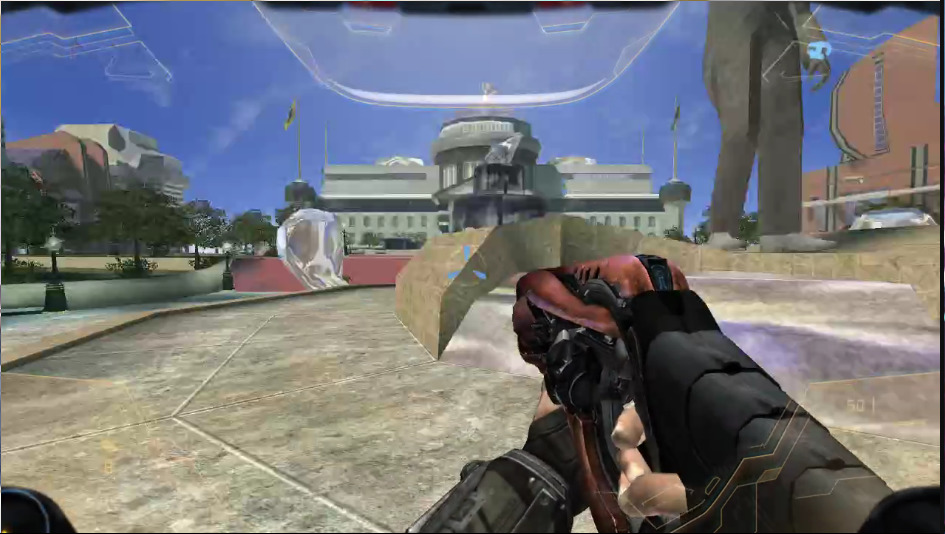The Halo 1 iteration of Blam!
By 2001's standards, the engine and asset tools were fairly innovative and powerful, combining techniques like portal-based occlusion, radiosity, particles, AI and pathfinding, dynamic physics, advanced shaders, and a scripting engine. It was written in C and C++.
See also:
- Map loading
- The renderer
- The physics engine
- AI system
- Sound system
- In-memory game state
- Scripting engine
- Netcode
Note that on Xbox, the engine makes some in-memory tag edits for balancing.
Other games

A Stubbs map extracted and re-used in CMT's Project Oddball
The Halo engine was not just used for the Halo series. Bungie co-founder Alex Seropian went on to found Wideload Games and used the engine for Stubbs the Zombie in Rebel Without a Pulse as well as a prototype of Hail to the Chimp. In fact, it is possible to extract tags from Stubbs using Refinery and recompile levels for Halo.
Another lesser-known use was in the Shadowrun prototype.